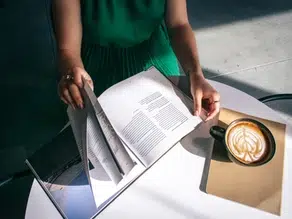Updated: Feb 7
Overview of Reading Comp Section
The reading comprehension section on the LSAT is 35 minutes long and includes 26-28 multiple-choice questions. Each multiple-choice question has 5 answer choices. This is comprised of 4 passages, with the questions split evenly among them all. Three passages are about 450 words and have one central essay, while one of the reading passages is typically a paired passage with two essays. Additionally, the reading comprehension section has social science, physical science, arts, humanities, and law passages.
Types of Reading Comprehension Questions
There are six different types of questions that you will be faced with when tackling the reading comprehension section of the LSAT. Below I have listed all six question types, the strategies to tackle them, and the question stems that will help you identify each type of question when on the exam. Specifically, there are three types of questions that you should always begin brainstorming as you read, and then there are three types of questions that you should only think about if a question asks about them.
Types of questions to think about while you read:
1) Main Idea
2) Logical Structure/Organization
3) Author’s Tone/Viewpoint
Types of Questions to think about only when they arise:
1) Details
2) Inference
3) Out of Context/Analogies
Main Idea:
Tip & Trick: Make sure your answer matches what is said throughout the ENTIRE passage. It is not the correct answer if it was only mentioned in one sentence or paragraph.
The question stems look like the following:
What is the main idea of the passage?
What is the primary purpose of the passage?
What is the passage mainly concerned with?
What would be the best title for this passage?
Which of the following most completely and accurately describes the passage?
Logical Structure/Organization:
Tip & Trick: While tackling this question type, a strategy is to locate “logical direction” words such as “moreover”, “although”, “ironically”, “but”, “first” “lastly” etc. to show the road map of the essay.
Tip & Trick: Make sure to look at EVERY word in the answer. This means that if an answer states “Contrasting the point of view that Mr. Dumphy explained”, you need to ask yourself the following questions: “is the author contrasting?”, “is it the point of view that Mr. Dumphy noted, or is it a point of view that another researcher?”, “did he explain it or did he just mention it?”, etc. Be critical about every word in each answer choice.
The question stems will look like the following:
How a passage is constructed – ie. does it define, compare or contrast, present a new idea, or refute an idea?
Which of the following best describes the relation of the third paragraph to the passage as a whole?
Author’s Tone/Viewpoint:
The question stems will look like the following:
What is the author’s tone?
What is the author’s viewpoint?
Would the author agree with X?
Details:
These questions always refer to a sentence or portion of text within the essay. Therefore, it is encouraged to refer to the passage. It’s okay to re-read portions of the text.
Tip & Trick: Most of the time this style of question will say, “based on the passage” and this is a great indicator to look back at the passage. There will be a direct line reference that answers your question.
The question stems will look like the following:
The role of the second paragraph is …
The author mentioned X in order to …
Inference:
Tip & Trick: A correct implication is something that was not explicitly stated but must be true. Example: If the passage stated “Joe has been to every state at least once”, then it is logical to infer that Joe has been to New Jersey even though the passage didn’t directly state that.
Tip & Trick: Just like the detail question, this style of question will often start with “based on the passage,” which indicates finding a direct line reference.
The question stems will look like the following:
Based on the information given in the passage, it can be reasonably inferred that?
The author of the passage would be most likely to agree with which of the following statements?
Out of Context/Analogies:
Tip & Trick: Try to figure out the core bones of the text. Relate those general concepts to a new concept in the answer choices.
The question stems will look like the following:
The situation described in line X is most like …
How would the author of the passage most likely respond to the assertion that…




